Remarks as Prepared
Thank you, Ambassador Quinn; the members of the Board for International Food and Agricultural Development, chaired by Dr. Brady Deaton; colleagues from across the U.S. Government, the private sector, and development community.
Let me also offer my congratulations to Dr. Daniel Hillel.
Nearly 30 years ago, in the hills of southwestern Pakistan, Dr. Hillel crossed paths with a USAID project charged with bringing his vision of drip irrigation to the region’s apple orchards and vegetable patches. For generations, agricultural practices in southwest Pakistan had reflected those in the rest of the world, as farmers let their fields dry out for long periods and then periodically drenched them.
As a result, water was wasted, and plants were stressed. Led by Steven Kovach, an irrigation agronomist who continues to serve with USAID, the project in Pakistan worked with Dr. Hillel to establish six one-acre drip irrigation demonstration plots, train local staff in running them, and produce a manual for their management that could be shared widely.
It probably wasn’t the first time Dr. Hillel lent his expertise to USAID, but his visits in 1984 to the project site made an impression on the USAID team. As a result of their work, a large number of commercial drip irrigation systems operate today in the apple orchards of the region’s largest city, Quetta—a legacy that shows the power of technology to take root, accelerating development and improving livelihoods over generations.
Two years ago, I had the privilege of delivering an address like this one here at the World Food Prize. A year before, at the 2009 G8 Summit in L’Aquila, Italy, President Obama had rallied the world behind the need to dramatically reinvest in food security, securing $22 billion from donors and a commitment from developing countries to spend more of their own budgets on agriculture.
The truth was that these agreements could not have come at a more important time. For more than two decades, agriculture funding had been on the decline, leaving the world ill-prepared to cope with the growing challenge of food insecurity. In 2007 and 2008, soaring prices for basic staples coupled with shortsighted policy responses, like export bans and panic buying, had set the world on edge. But it also convinced global leaders that it was finally time to do things differently.
Since that time, we’ve seen the U.N. General Assembly endorse the principles agreed to at L’Aquila, the G20 include food security on its agenda, the revitalization of the U.N. food agencies, countries across the world design their own strategies for food security, and NGOs step up their own commitments to end hunger.
That food security is on the global agenda today seems normal. But it was just two years ago here in Iowa that I first introduced USAID’s Bureau of Food Security and discussed President Obama’s recently announced global food security initiative Feed the Future.
It all felt so new at the time, because it was new. It represented a new model of development, which has, in many ways, come to define the way we work around the world today:
A model that advances a far deeper focus on science, technology and innovation to dramatically expand the realm of what is possible in development.
A model that aligns resources behind comprehensive country plans developed and supported by policymakers, technical experts and stakeholders in developing countries.
A model that engages far more broadly with private sector partners—putting behind us an old reluctance to work together, and engaging companies not as wellsprings of corporate charity, but as real partners with an interest in serving the needs of the most vulnerable.
And a model that delivers more for developing countries, but demands far more as well.
That’s the guiding framework for Feed the Future, an initiative that has brought the U.S. Government together behind country-led plans that have made tough trade-offs and focused on specific regions, policies, crops and livestock with the greatest potential for fighting hunger and transforming economies.
Three years later, it is high time we’ve taken stock of our progress and asked what we’ve achieved. We know there are many ways you can measure results in development, especially when you consider the comprehensive reach of Feed the Future. We know the first way is by measuring the number of people you’ve reached.
Over the last three years, working on the ground in 19 countries—from Guatemala to Malawi, Tanzania to Bangladesh—Feed the Future has helped 1.8 million people adopt improved technologies or management practices, growing yields and incomes.
That includes Sushmita Chaudhary, who struggled to eke out a living for her family in Nepal from cereal crops. In 2011, she decided to join a Feed the Future program that taught her about nursery management and crop rotation. She started planting high-value crops like tomatoes and cauliflower and, as a result, she earned seven times her former income and increased yields by eleven-fold.
We have also reached 8.8 million children through nutrition programs that have reduced anemia, supported community gardens, and treated acute malnutrition.
That includes Aisha Majuto and her infant son Lubanga, who live in central Tanzania. When Aisha was pregnant, she received home visits from a nutritionist, who counseled her on the importance of iron tablets and exclusive breastfeeding for the first six months of her child’s life. When Aisha’s husband tried to stop her from breastfeeding after only three months, the nutritionist intervened and successfully counseled the whole family.
The second way you can measure results is through outcomes you’ve helped deliver—meaningful signs that Feed the Future is beginning to have an impact at scale.
Here’s just one: By planting an improved seed variety, rice farmers in Senegal have gone from a rice deficit—actually needing to purchase additional rice to feed their families—to producing a surplus. In just two seasons, we’ve seen the number of farmers using this new rice increase from 114 to 5,000 producers. And sales are expected to jump nearly 3,000 percent—from $12,000 in 2010 to $365,000 next year.
The third way you can measure results is through visible changes in policies that governments pursue.
In the last three years, USAID has ended monetized food assistance in Haiti because our studies revealed it would disrupt local markets. We encouraged commitment countries to limit or stop using food export bans as the worst drought in 60 years hit the Horn of Africa last year. And we have already seen half of all Feed the Future countries increase their public expenditures for agriculture.
The U.S. Government has also come together behind Feed the Future in a new and coordinated fashion to maximize our impact. The Millennium Challenge Corporation has directed half of its total investment portfolio to support food security. The U.S. Department of Agriculture is sharing its vast expertise in building agricultural capacity with developing countries. And the Peace Corps has more than 800 dedicated Feed the Future volunteers working closely with farmers and families to improve food security and nutrition.
These changes may be hard to measure, and they’re not necessarily the ones that excite the imagination, but they are the changes that lay the groundwork for sustainable progress.
Development takes time, and food security cannot be achieved overnight. But the facts are in, and it’s clear that we’re seeing progress from our collective efforts, as reflected in global production, poverty, and nutrition topline indicators.
Since 2009, data from the World Bank and the Food and Agricultural Organization has shown an increase in food production in Feed the Future countries by an average of 5 percent in Latin America and the Caribbean, 13 percent in Southeast Asia, and 18 percent in Africa.
In the past, the development community has often spoken about success in terms of inputs—dollars pledged and dollars spent. Well, we are on track to meet all our commitments, including President Obama’s pledge at L’Aquila three years ago.
But more importantly, we’re ready to talk about what’s most important—and that is results. Today, I am proud to announce that the report is sitting on your chair—the first Feed the Future progress report. In 33 pages, it outlines our efforts to apply our new model of development—demanding more from our partners, deepening private sector engagement, and harnessing innovation. And doing all of this at an increasingly impressive cost-effective scale.
In fact, across Feed the Future, we have generated over $9 from other partners for every dollar we’ve spent. By sharing risk with local banks and investors through credit guarantees, our Development Credit Authority has unlocked $443 million in private sector lending for agriculture—primarily in Feed the Future countries—in just three years.
And work by our in-house economists who specialize in cost-benefit analysis has shown a rate of return for Feed the Future investments that averages 22 percent—with a range from 11 to 148 percent.
Now that’s the big picture. At the community level, the changes are no less powerful. Parents are learning about nutritious foods like peanut paste, chickpeas and sweet potatoes. Farmers are carrying record hauls to market. And women are not only securing rights to the land they tend, but also gaining greater access to credit and breakthrough technologies.
For over three decades, nearly all World Food Prize laureates have had one thing in common—one defining attribute that has helped them turn ideas into real development solutions for millions.
From Dr. Swaminathan to Dr. Hillel, each has harnessed the power of science, technology, and innovation to dramatically accelerate progress, setting countries on a path that has allowed them to leapfrog 100 years of development.
To help realize this potential around the world, we have fundamentally changed our approach—scaling up investments in cutting-edge research, providing direct institutional support to local universities and institutes, and training the next generation of experts.
Thanks to this new emphasis, vitamin A-rich, orange-fleshed sweet potatoes are reaching tens of thousands of households—from Uganda to Mozambique to Bangladesh.
And the deep placement of urea briquettes has helped transform 627,000 hectares of land in Bangladesh, leading to the first-ever rice surplus in the country’s poorest state, home to more than 2.2 million people.
The innovation is as simple as it is effective. Instead of applying urea, a nitrogen fertilizer, to the soil—where as much as 70 percent is lost to runoff or the atmosphere—it is compacted into briquettes and buried near plant roots, where it releases nitrogen slowly.
Although agricultural technologies—like seeds and fertilizers—represent the core of our research investments, we’re expanding our focus on science in other innovative ways.
For example, significant advances in actuarial science have enabled us to partner with insurance firms to pilot microinsurance programs. In Kenya last October—at the height of the drought—insurance payments were made to over 600 pastoralists who had purchased coverage for their animals earlier in the year.
Today, we’re expanding this emphasis on science through three new partnerships—with UC Davis, the International Maize and Wheat Improvement Center, and Arcadia Biosciences—to develop climate-resilient cereals, including maize, wheat and millet that can withstand drought and thrive in heat.
But we know that cutting-edge advances and breakthrough technologies don’t just happen on their own. You need the expertise and ingenuity of scientists, agronomists, engineers and nutritionists—all studying the problem and devising the right solutions.
Today, I’m pleased to announce a new partnership called Feed the Future’s Innovation for Agricultural Training and Education that brings a consortium of U.S. universities—led by Virginia Tech—to help more than 30 schools and universities in the developing world improve their curriculum, strengthen administrative capacity, and build their infrastructure. Together, these efforts will reach more than 120,000 students, empowering the next generation of agricultural leaders and World Food Prize laureates.
We’re also partnering with TechnoServe to help scale up the work of Partners in Food Solutions, which links volunteers from General Mills, Cargill, and DSM with small and medium-sized mills and food processors in the developing world. Together, we hope to reach 256 food processors in Kenya, Malawi and Zambia with 50,000 hours of service.
But Feed the Future isn’t just about building the capacity of businesses and institutions. It is about expanding opportunities for individuals.
That is why we are proud to be a strong and active partner in the African Women Agricultural Research and Development Fellowship Program, which has already helped more than 250 women in 11 countries make their mark on science. That includes Missa Demissie, who after receiving a fellowship, accepted a new job with Ethiopia’s Ministry of Agriculture, gained a network of peers, and developed a new specialty in malt barley. Today, more than 1,000 women have already applied for the 70 places in the next round of fellowships.
The early results we’ve seen are remarkable, but we need to ensure we’re also bringing them to scale. For that, we need not only the transformative power of technology, but also the dynamic energy of the private sector. As our work across the government reflects, high-impact public-private partnerships are a foundation for sustainable, broad-based economic growth.
Last year, as we reviewed our progress leading up to the G8 Summit in May, we found that despite the growth of private sector investment in developing countries, almost none of it went to poverty-reducing agricultural development in Africa. When we reached out to global and local firms, we frequently heard them cite the same barriers to investment, including corruption, ineffective policies, and a lack of access to donor programs that could help make projects in developing countries more feasible.
As a result, we started bringing donors, private sector companies, and developing countries together in a new alliance that would expand investment opportunities in African agriculture by matching commitments from the private sector with commitments from African countries to implement serious market-oriented reforms.
The premise was simple, but it has dramatic potential when applied at scale. Announced at the G8 at Camp David Summit hosted by President Obama, the New Alliance for Food Security and Nutrition aims to lift 50 million people in sub-Saharan Africa out of poverty in the next decade.
So far, more than 70 global and local companies have committed more than $3.5 billion to expand seed production and distribution, establish small-scale irrigation systems, and source food locally for global supply chains.
For example, in Ethiopia, DuPont is moving forward with their commitment to strengthen their maize value chain, reaching 32,000 smallholder farmers and providing a credit facility for storage dealers. And in Tanzania, a local seed company called TANSEED is developing a new seed package designed for smallholder farmers that will help raise the incomes of 1 million people.
At the same time, six African countries have developed cooperation frameworks to guide reforms, evidence of which is already beginning to take shape.
Tanzania has publically committed to removing its export ban on staple commodities that has, in the past, been implemented during food emergencies. And just a month ago, we formed a partnership with Ghana’s Ministry of Food and Agriculture and the World Bank to help deliver on three of Ghana’s New Alliance commitments—establishing a land database for investors, creating model lease agreements, and forming clear procedures for channeling investor interest to appropriate government agencies.
These are impressive steps, but we’re also always searching for ways to ensure that they reach all the way back to individual businesses, farms and families. One of the most innovative ways we do this is through our Development Credit Authority, which encourages local banks to lend to underserved farmers and agribusinesses, creating market linkages that will reduce poverty over the long term.
Today, I am pleased to announce two new DCA agreements. The first works with the World Food Program’s Purchase for Progress in South Sudan, Tanzania, Kenya and Ethiopia to partially back loans made to smallholder farmer organizations, including those with forward delivery and direct contracts from WFP. It’s a creative approach to using existing markets to bring risk adverse banks to the table. By having a purchase order from the World Food Program, a farmer can use that as collateral and access financing—in some cases for the very first time.
The second DCA agreement works with Root Capital, a Boston-based social investment fund, to open financing opportunities for agricultural businesses that are too large for microcredit, but too small for traditional commercial lending. As a result of this partnership, over the next five years, Root Capital will disburse more than $50 million in loans, reaching more than 1 million small-scale farmers, primarily in Feed the Future countries.
This is exactly the kind of private sector development we need to ensure the sustainability of our results.
Our goals are ambitious. They encourage us to push the boundaries of what is possible and inspire others to join our efforts. But in the end, they are only as meaningful as our ability to deliver on them. And that ability is determined by our commitment to closely monitor, measure and publically report on our progress.
Today, we require baselines and set evidence-based targets. We demand the rigor required to understand what is working—and what is not—in order to achieve meaningful results.
Through Feed the Future, we’re building a robust management system for gathering and disseminating timely, accurate data. Instead of setting up a parallel structure that replicates the work of local ministries and relies on modeling and interpretation, we are working closely with local institutions—often the National Bureau of Statistics—to build an open-data platform that measures our progress against our goal-level indicators.
Just as country-based Demographic and Health Surveys helped dramatically expand monitoring capabilities in global health and rallied the world behind new efforts to end preventable child death, Feed the Future’s new open-data platform will transform our knowledge and inform cutting-edge new approaches.
Despite this progress, we all know our hardest work is just beginning and some of our greatest challenges lie ahead. Here in Iowa, famers know that better than anyone, as rural communities across the country continue to feel pressure from a parched land.
Our nation has some remarkable systems in place to support our farmers and ranchers through a tough time. They can buy insurance products, access our government’s real-time data monitoring, and count on universities like Iowa State to study the problem and foster new solutions.
In developing countries, many of these support networks simply don’t exist—leaving the consequences of drought and climate change to fall disproportionately on the global poor.
The United States will always be ready to provide aid in times of urgent need. It is one of the most profound and most meaningful expressions of who we are as a people, and the limitless generosity and compassion that unites us.
But as the president said when he launched the New Alliance, we can’t deliver food aid only to let communities go back to the way things were. “Development has to be sustainable, and as an international community, we have to do better.”
That’s why, even as we swiftly answered humanitarian calls in the Horn of Africa last year, and in the Sahel today, we have helped countries adopt real plans and structures to strengthen the resilience of local communities to droughts and floods.
That’s why, even as we provide life-nourishing peanut paste to more than 71,000 children in East Africa with severe acute malnutrition, we are also helping parents around the world learn about nutritious foods like the orange-fleshed sweet potato.
That’s why, even as we develop the next generation of food-aid products, we are also generating groundbreaking advances in agricultural development, sowing economies with the seeds they need to grow..
And that’s why, even as we remain poised to respond to the next humanitarian food crisis, we will not stop working towards the day it’s no longer needed.
Thank you.
Related Speeches
- Remarks by Polly Dunford, Mission Director, USAID Cambodia, Launch Event of Feed the Future Cambodia Harvest II
- Remarks by Polly Dunford, Mission Director, USAID Cambodia, Inauguration of Center of Excellence for Sustainable Agricultural Intensification and Nutrition
- Remarks by Polly Dunford, Mission Director, USAID Cambodia, Scaling Up Nutrition (SUN) Annual Meeting

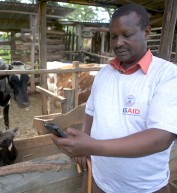
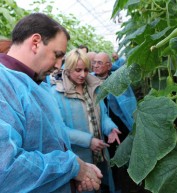
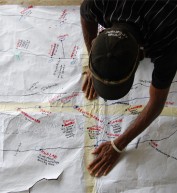
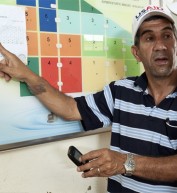

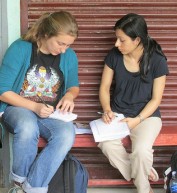
Comment
Make a general inquiry or suggest an improvement.